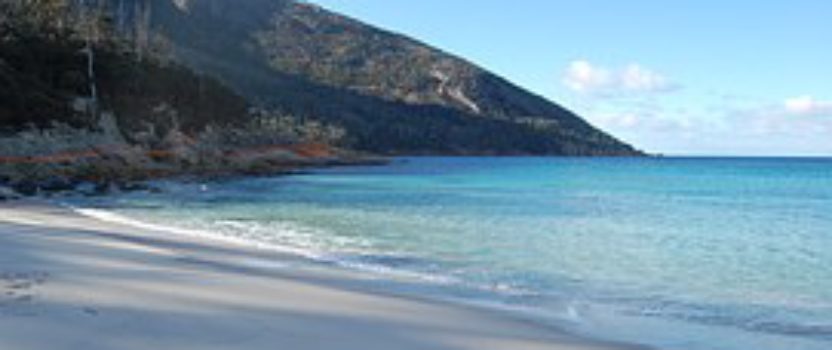Post 22 – This and That
Finally we have a glimpse of spring. For the last two days the temperature has reached something above 20º, the sun has shone, the fruit trees are pretty with blossom, the birds are singing enthusiastically, the grass is verdant and everything looks lush. This warmth and sunshine has does wonders for our electricity consumption; yesterday we drew only 5.6 kWh from the grid. 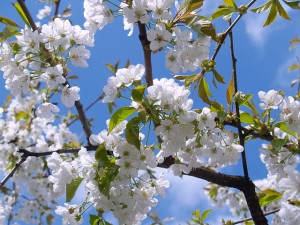 Yeah! We didn’t need any heating, the air was warmer so the heat pump worked more efficiently, we generated our own power for washing and computing and, hopefully, we also exported a bit of power.
Yeah! We didn’t need any heating, the air was warmer so the heat pump worked more efficiently, we generated our own power for washing and computing and, hopefully, we also exported a bit of power.
In this post I am going to try something a little different; I am trying to find a format that I think is interesting; I am trying to find my ‘voice’; I am trying to find a way to capture the things that I read or experience during the week that I think are worth recording. So here goes – bear with me my faithful four readers ( I am sorry to report that the cat has given up engaging with this blog so the ‘half a reader’ status that I gave him has been lost).
Really ….
I’m sure most people realize that global warming is leading to glaciers melting which, in turn, is leading to increases in sea levels. I’m sure most people are also aware that there are still some diehards out there who think climate change is not happening. I am interested in the extent to which issues associated with climate change are becoming mainstream so how is this for mainstream (diehards take note). In a recent newspaper article, it was reported that an Australian betting agency called Sportsbet has created a system whereby you can bet on which coastal areas are going to disappear first, as a result of rising sea levels. At this stage, Wineglass Bay in Tasmania is at $16 and Noosa is at $7.50. The picture at the top of this post is of Wineglass Bay, amazingly beautiful and incredibly vulnerable. Should I visit it soon, help to protect it or place a bet?
Dah ….
I’ll put my hand up and admit that I didn’t really get this point and for those who think, everyone knows this, well I may have heard it, probably glossed over it, but really, truly didn’t ‘get it’. So here’s the point. Heat pumps, including reverse cycle air conditioners (see Post 21), work better in temperatures that are the opposite of what they are trying to achieve. For example, our heat pump that heats hot water, does so with less work on the part of the electrically driven fan, when the outside temperatures are hotter, than it does in the depths of winter when it is very cold.
We use more electricity to heat the hot water in winter than we do in summer because the fan has to work harder; same appliance, different levels of electricity consumption depending on the weather. Likewise, the reverse cycle air conditioner (which is a type of heat pump) works harder heating the house on extremely cold days than it does on moderately cold days. The reverse is true in summer; the air conditioner works harder to cool the house on extremely hot days than it does on moderately hot days (when we probably don’t turn it on anyway).
Now, I just reread the last two paragraphs to check for errors and thought how boring! What’s the point in sharing that understanding? There is, however, a point because the answer is relevant to the minutiae of an emerging low carbon life. 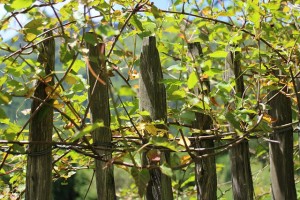 Protect your heat pumps from climatic extremes! Both our heat pumps are north facing which, at the time we installed the hot water heat pump, was a good idea for winter because the north is the warmer side of the house. It’s also good for the reverse cycle air conditioner in winter but not so good in summer, when it is trying to get cool air out of hot air.
Protect your heat pumps from climatic extremes! Both our heat pumps are north facing which, at the time we installed the hot water heat pump, was a good idea for winter because the north is the warmer side of the house. It’s also good for the reverse cycle air conditioner in winter but not so good in summer, when it is trying to get cool air out of hot air.
I have decided that both units would benefit from additional protection from the elements so I intend to put up an insulating screen a metre or so in front of them, making sure that they still have a good, circulating air flow because, without good airflow, they won’t work. I found this out when we put in a wall close to one side of our hot water heat pump and then had to get an electrician to fix the heat pump and a plumber to move it 500 mm or so away from the new wall. An expensive lesson! I have read that a trellis and an evergreen vine work well to moderate temperatures around heat pumps, although waiting for the vine to grow could take a while.
Something New ….
Grass, grass and wait, more grass, as we enjoy spring. We are very lucky to live in a rural area surrounded by farmland. I am additionally lucky to have a small, pretty garden behind a protective wall but everywhere else around the house is either grass, fruit trees or a water treatment discharge area of about 400 sqm with yet more grass. For reasons of aesthetics and fire safety, I like the grass around the house to be cut but to do this I use a petrol powered ride on mower. I also have another, old petrol powered hand mower for cutting the grass in my walled garden. In line with my commitment to reducing our dependence on fossil fuels, I have been 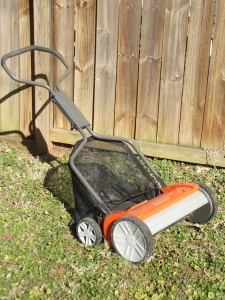 wondering if there is something else I can use so this morning I asked THS about sheep. I feel sure we could borrow a couple of sheep from our neighbors for a few months, if they were a viable grass-eating alternative to mowing.
wondering if there is something else I can use so this morning I asked THS about sheep. I feel sure we could borrow a couple of sheep from our neighbors for a few months, if they were a viable grass-eating alternative to mowing. 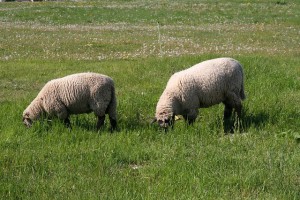
Now my experience of sheep is pretty limited but I know from recent experience they will eat ornamental vegetables and trample over garden beds if left to their own devices so there is no way they would be invited into my walled garden. I was, however, very interested for at least 15 minutes in their ability to keep the grass down around the house. THS tells me that, unfortunately, sheep will eat leaves from low hanging branches and so plants, under which sheep graze, end up starting their canopies at the height of the extended neck of a sheep so sheep are not an option.
In an earlier conversation with a friend, we talked about old-fashioned push mowers. I conveniently forgot about this conversation (it sounded like hard work) until the management of grass crossed paths with my low carbon interests. HC has been successfully using a push mower for quite some time so I thought why can’t I do the same. As my birthday is coming up, and THS wants to give me a gift, I have taken another tiny step on the path to a low carbon life and asked for a ‘hand’ mower, ‘push’ mower, ‘reel’ mower, ‘unpowered’ mower, call it any of these things, for inside my walled garden. I suspect I will receive it so I’m hoping I will be able to write a post in a few weeks time reporting on how wonderful push mowers are!
For anyone who is interested, including THS, my research tells me that you should get one with five or seven ‘reels’ that is self-sharpening, meaning that you only have to have it professionally sharpened every five to eight years. Beyond that, it all sounds simple so long as you don’t let your grass get too long in the first place and so long as you are not trying to cut through ‘hard’ stuff which I guess means sticks. They don’t seem to be very expensive (about $100 for what seems to be a good one) and they can be ordered on-line and the reviews say that the on-line delivery companies are very reliable. Hope this turns out to be something good and it’s not too much hard work! Bye for now, Jane

